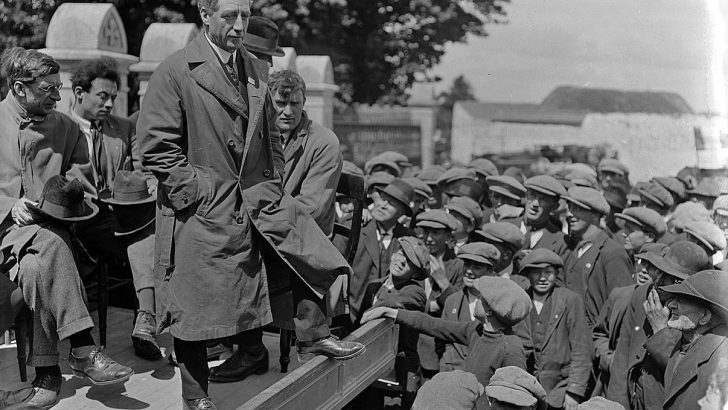Kilkenny in Times of Revolution 1900 – 1923, by Eoin Swithin Walsh
foreword by Diarmaid Ferriter (Merrion Press, €19.99 pb)
This is a comprehensive account of the revolutionary years in Kilkenny city and county from 1900 to 1923. As a narrative on the War of Independence and Civil War it is remarkable for its detail. One of the other merits of the book is the meticulous description of the effects of the years of violence on the civilians at that time and subsequently.
The author sets the scene with a survey of the years prior to the Easter Rising in 1916. The Volunteer movement was established in Dublin in November 1913. A local company was formed at Kilkenny’s City Hall in March 1914. The IRB quickly infiltrated the company securing key positions.
After John Redmond, in September 1914, urged members to join the British forces in the front in France the movement sundered throughout the country. At a parade of the Kilkenny companies 5% strongly objected to Redmond’s advice and split from the main body. Thereafter they were known as the Irish Volunteers or the Sinn Féin Volunteers.
Both groups of volunteers continued to parade and train openly. Peter DeLoughry doubled as the local Head Centre of the IRB and as OC of the Irish Volunteers. By a curious irony on the eve of the Easter Rising he was in close contact with Eoin MacNeill, OC of the Irish Volunteers, rather than with Pearse and the other IRB members of the Revolutionary Council which planned the Rising.
As a result, when MacNeill cancelled the Rising, the Irish Volunteers in Kilkenny took no part in it. When it concluded, unlike the Irish Volunteers elsewhere, they were able to keep their arms which they hid in the grounds of a local convent.
In later years veteran IRA leader Ernie O’Malley was dismissive of the role of the Kilkenny IRA in the struggle for independence. But he failed to advert to the fact that he might have been partially responsible for this outcome. On behalf of IRA GHQ he attended a meeting of the Kilkenny brigade on 4 December 1920.
On the following day he was captured by the Auxiliaries, as was his notebook which had a list of the names of all Kilkenny IRA captains along with the number of weapons and ammunition in each area of the county. Notwithstanding this setback, Walsh’s detailed account of the engagement of the Kilkenny IRA with the crown forces from 1919 to 1921 vindicates their subsequent claim to have been as effective as their comrades in most of the other counties.
The Kilkenny IRA divided on the issue of the Anglo-Irish Treaty. Subsequently, while during the war of independence there were 22 fatalities within the county there were 26 during the civil war. Moreover, because of atrocities committed by both sides, in Kilkenny, as elsewhere, the civil war continued to have a visceral effect on society and politics for more than a generation.
Walsh rightly refers to the significant contribution made by the Kilkenny People and its editor, E.T. Keane, to the development of the nationalist movement in Kilkenny city and county.
Sessions
A native of Listowel, he began his career as a journalist, aged 16 and still attending St Michael’s College, by reporting for a number of newspapers on the sessions in the local courthouse. With his friend the Fenian, Patrick J. O’Keeffe, he co-founded the Kilkenny People in 1892.
Of tiny stature – he was known as ‘Mousey’ Keane – he was large in moral and physical courage. A fearless advocate of the separatist cause and an unrelenting critic of the misconduct of the Crown forces during the war of independence, he had his newspaper suppressed on two occasions.
He was constantly harassed, was imprisoned and on more than one occasion threatened with death by the Black and Tans.
Later he strongly supported the Anglo-Irish Treaty and the nascent Irish Free State, and again exhibited remarkable courage during the early months of the civil war.
This is a splendid study of Kilkenny’s ‘fight for freedom’. It is a template which could and should be initiated in every other county in Ireland. But with some regret I conclude with this envoi to the author. History is a serious subject: it is wiser not to succumb to the temptation to make facetious remarks while recording it.


 Cathal Brugha in Kilkenny urging resistence to the Treaty (De Valera is seated behind him).
Cathal Brugha in Kilkenny urging resistence to the Treaty (De Valera is seated behind him). 